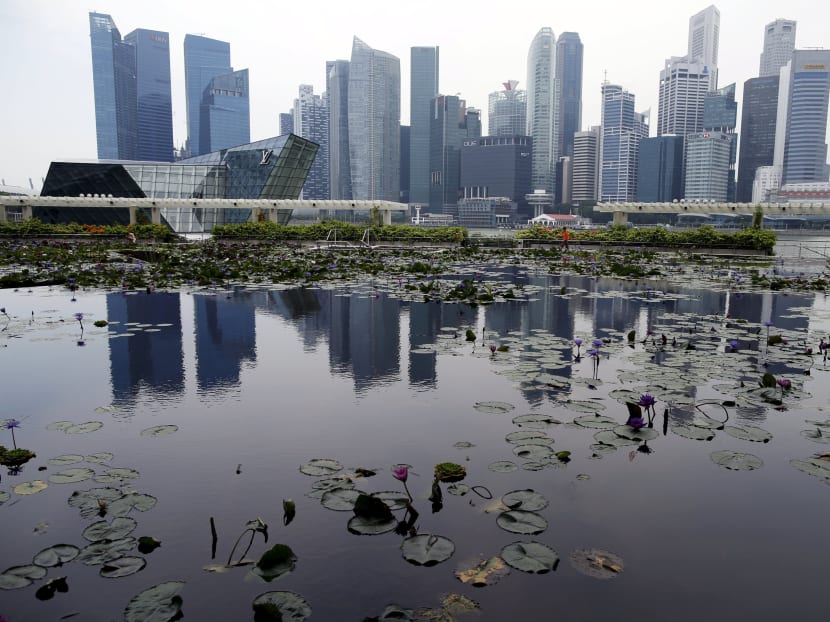Services rebound aids S’pore’s Q2 growth, but outlook still cloudy
SINGAPORE – The Republic’s economy expanded at a quicker pace in the April-to-June period compared to the previous quarter, as both goods and services producing industries grew, the Ministry of Trade and Industry (MTI) said on Thursday (July 14).
SINGAPORE – The Republic’s economy expanded at a quicker pace in the second quarter than in the first, lifted by broad-based improvements across both goods and services-producing industries, but economists warned that mounting global risks, including Brexit, will weaken Singapore’s growth momentum for the rest of the year.
Gross domestic product (GDP) grew by 2.2 per cent year-on-year in the second quarter, marginally higher than the 2.1 per cent growth in the previous three months, advance estimates released by the Ministry of Trade and Industry (MTI) showed on Thursday (July 14).
On a quarter-on-quarter seasonally-adjusted annualised basis, the economy expanded by 0.8 per cent, up from the 0.2 per cent growth in the preceding quarter. These were largely in line with expectations. Economists in a Reuters poll had forecast a 2.2 per cent year-on-year growth and a 0.9 per cent quarter-on-quarter expansion.
Despite the latest pick-up, economists said tougher times are ahead given that the gloom over Britain’s vote to leave the European Union has yet to be reflected in Thursday’s preliminary GDP reading. A slowing Chinese economy and an uncertain recovery in the United States also add to the challenging climate that Singapore has to navigate.
“The uncertainties surrounding the United Kingdom’s exit from the EU and news from any other potential exits among the existing EU members will be worrying, as the EU is Singapore’s second-largest trading partner,” said UOB economist Francis Tan.
This does not bode well for the manufacturing sector, which managed to reverse six straight quarters of declines to post a 0.8 per cent year-on-year expansion in the three months to June on increased output in the biomedical manufacturing and electronics clusters. But on a quarter-on-quarter basis, growth in manufacturing slowed to 0.3 per cent from 18.4 per cent in the previous quarter.
“There remains a real risk for manufacturing growth to soften into the second half … Do note that China remained Singapore’s top destination for non-oil domestic exports, followed by Europe and US in the first five months of this year. Thus, speed bumps in these respective economies could prove to be significant hindrances to Singapore’s small and open economy,” OCBC economist Barnabas Gan said.
That leaves the domestic-oriented sectors such as construction and services to limit the downside risks to Singapore’s growth. Last quarter, growth in construction eased to 2.7 per cent year-on-year from 4.5 per cent in the January-to-March period, due largely to a slowdown in private sector construction activities. On a quarter-on-quarter basis, the sector expanded 0.6 per cent, lower than 3.5 per cent previously.
During the same period, services expanded 1.7 per cent year-on-year, the same pace as the previous quarter, driven by growth in wholesale and retail trade as well as the transportation and storage sectors. On a quarter-on-quarter basis, the industry grew 0.5 per cent, reversing the previous 4.8 per cent contraction.
“The silver lining is that at least overall services sector growth is back on a firmer footing. As it accounts for two-thirds of the economy, the risk of a technical recession will remain high if services growth continues to contract,” DBS economists said in a research note.
With an overall subdued outlook, some economists said there is room for the Monetary Authority of Singapore (MAS) to ease policy in its upcoming review in October. The central bank had eased to a zero appreciation stance for the Singapore dollar nominal effective exchange rate in its April review, but left unchanged the width of the policy band and the level at which it is centred.
“Though the domestic and global outlook currently is not as grim as during the 2008/2009 period, we expect economic growth and core inflationary pressures in Singapore to slow in the second half of this year. Hence there is a case for the MAS to lower the centre of the policy band later this year in October,” said Mr Roy Teo, senior FX strategist at ABN Amro.







